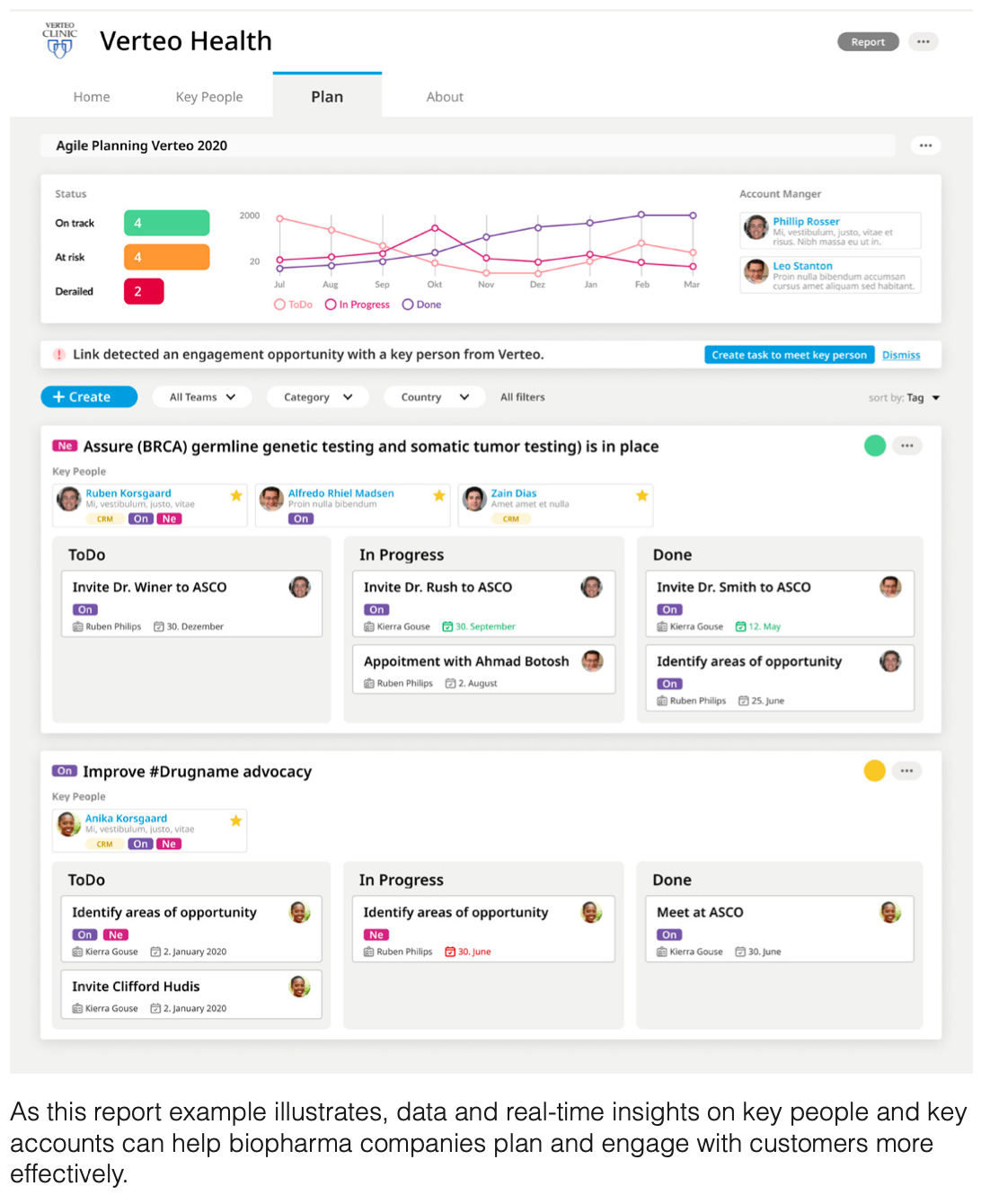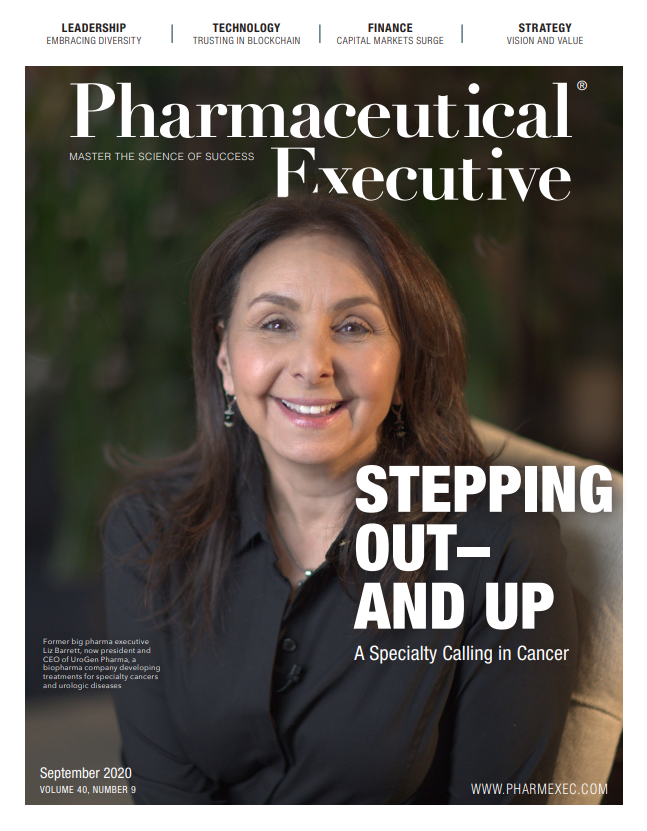Unlocked Potential — ‘Keying’ in On New-Era Engagement
How adoption of the key account management (KAM) model can help drive pharma’s agility in reaching and influencing a more diverse set of healthcare customers and decision-makers.
We are in the early days of precision medicine and a decades-long trend that will lead to groundbreaking cures and treatments. These innovations are becoming the foundation of scientific discovery and with them, an explosion of available information and data that will influence big changes throughout the life sciences industry, including the growing importance of key account management (KAM).
Kilian Weiss

Precision medicines require the ability to identify patients with rare and individualized diseases, so target patient populations are much smaller. As a result, biopharmaceutical companies will need to become more agile and integrated within the healthcare ecosystems in which they operate to better identify patients who may benefit from innovative new therapies.
The growth of precision medicine demands improved collaboration across an expanded list of stakeholders as more healthcare professionals (HCPs) have joined larger healthcare groups. Decision-making has moved beyond the individual HCP to a more diverse group ensuring alignment with a healthcare organization’s overall strategic objectives. Navigating this complex environment of decision-makers is challenging and requires an expanded approach beyond the traditional one-to-one, rep-to-physician relationship model.
KAM enables biopharma companies to operate in this more interconnected and dynamic environment and work better with HCPs and payers in delivering the right care. With KAM, the industry can transition to a team-selling model and develop new, more impactful relationships with a diverse group of customer stakeholders.
A holistic, agile approach to KAM can transform customer engagement in the era of precision medicine by giving account managers the industry and customer insights they need to succeed; enabling companies to align with the strategic objectives of healthcare systems; and helping organizations reach the metrics that define customer success.
Give account teams real-time insights
Account managers have pressure to keep up with the latest information such as new therapies, trials, discoveries, and patient outcomes. Proactively gathering all this information from different channels is overwhelming. There’s simply too much data coming from too many sources. KAM brings together key account information from a complex mix of healthcare stakeholders and data across many different channels. AI-driven insights on key people and accounts are automatically collected from thousands of scientific and digital sources such as social media, news feeds, video platforms, industry conferences, clinical trials, and a customer relationship management (CRM) system.
AI enables companies to analyze millions of customer activities in real-time and identify patterns in a way that no human could ever do. With all the relevant insights on customer activities and relationships from numerous scientific and digital sources, key account teams can adapt plans with much greater agility.
Bringing together accurate customer data and real-time insights allows companies to plan and engage customers more efficiently and effectively for specialties such as oncology, rare disease, and other therapeutic areas. Ultimately, KAM helps organizations respond faster to customers and their patients’ needs and gives key account managers the information they need to develop much deeper relationships with the right people and decision-makers.
Align company and customer strategies
The ability for a key account manager to navigate the complexities of one customer account is challenging. Seeing across multiple brands and disease areas, with a full understanding of every customer need, is increasingly more difficult.
KAM can help key account managers see the bigger picture across their internal organizations and large, complex key accounts such as hospitals, health systems, and organized customer groups. KAM enables life sciences to move beyond the transactional rep-physician sales model by providing the tools and resources they need to streamline the sales process—and make it more transparent. Commercial and medical teams typically piece together key account information from a complex mix of internal and external stakeholders, as well as scouring various hospital and social media websites. To get the data they need, it can be hard for key account managers to even know where to start.
Access to data and insights is critical to increasing transparency, strengthening collaboration, and improving alignment of key account teams across therapeutic areas. KAM helps companies better align their business with their healthcare accounts’ objectives. Account managers get visibility into the various decision-makers involved in the process, as well as who within their own organization has existing relationships with those key individuals.
Companies can align their planning with the insights gathered from key accounts and provide a much more meaningful experience for customers. Better visibility enables teams to then drive the right actions at the right time for the company and accounts, delivering the greatest value to customers when they need it. The ability to see this complete picture allows commercial and medical teams to coordinate a much more effective cross-functional team effort that is aligned with their customer’s goals and objectives.
Click to enlarge

Work toward a common goal
In the traditional brand-centric sales model, success is measured by whether the brand sales team meets quantitative sales metrics. Each brand typically has its own goals and competes against other brands within a customer account, oftentimes unknowingly. Separate from the brand team, individual reps are measured by activities such as seeing the right people the right number of times. All these metrics tend to drive the opposite behavior of a KAM model.
In the new healthcare system landscape, companies are rethinking customer value and moving to metrics that optimize patient outcomes. Shifting success from an individual brand to an overall account level can refocus an organization’s effort to better support HCPs and their healthcare organizations. KAM can ensure accounts are working toward the same thing, in partnership with customers, and improve the value they deliver to their healthcare customers.
This level of strategic partnering involves understanding the specific levers to pull in order to align with the account’s objectives. Every healthcare organization is focused on delivering more efficient and effective care pathways, so patients get the outcomes and treatments they need faster.
A biopharma organization can only meet this goal with a complete understanding of the customers’ long-term objectives and by empowering key account managers with timely insights.
A holistic KAM approach connects data and insights about key people and accounts so teams can expand their relationships to new customer groups. This enables biopharma manufacturers to create greater value for customers’ C-suite executives and their patients.
Moving toward an agile KAM future
With the move toward more innovative precision medicines and specialty drugs, a wider variety of stakeholders are involved in administering patient care. This creates complexity in identifying the right patients, treating them, and managing the services needed to drive adherence and patient outcomes. KAM has the potential to give organizations what they need in order to respond faster to changing customer needs.
But commercial agility requires more than just insights. It also requires a change in the KAM operating model, especially in the planning process. When key account teams have the data, intelligence, and strategic insights they need, they can speed decision-making and tailor their customer engagement.
A holistic, agile KAM approach can fuel a new era of customer engagement so key account teams can reach the right people at the right time and ensure patients in every therapeutic area get the treatments they need.
Ultimately, biopharma organizations will better align to the needs of their customers and achieve new levels of commercial success.
Kilian Weiss, General Manager, Veeva Link

The Misinformation Maze: Navigating Public Health in the Digital Age
March 11th 2025Jennifer Butler, chief commercial officer of Pleio, discusses misinformation's threat to public health, where patients are turning for trustworthy health information, the industry's pivot to peer-to-patient strategies to educate patients, and more.
Navigating Distrust: Pharma in the Age of Social Media
February 18th 2025Ian Baer, Founder and CEO of Sooth, discusses how the growing distrust in social media will impact industry marketing strategies and the relationships between pharmaceutical companies and the patients they aim to serve. He also explains dark social, how to combat misinformation, closing the trust gap, and more.